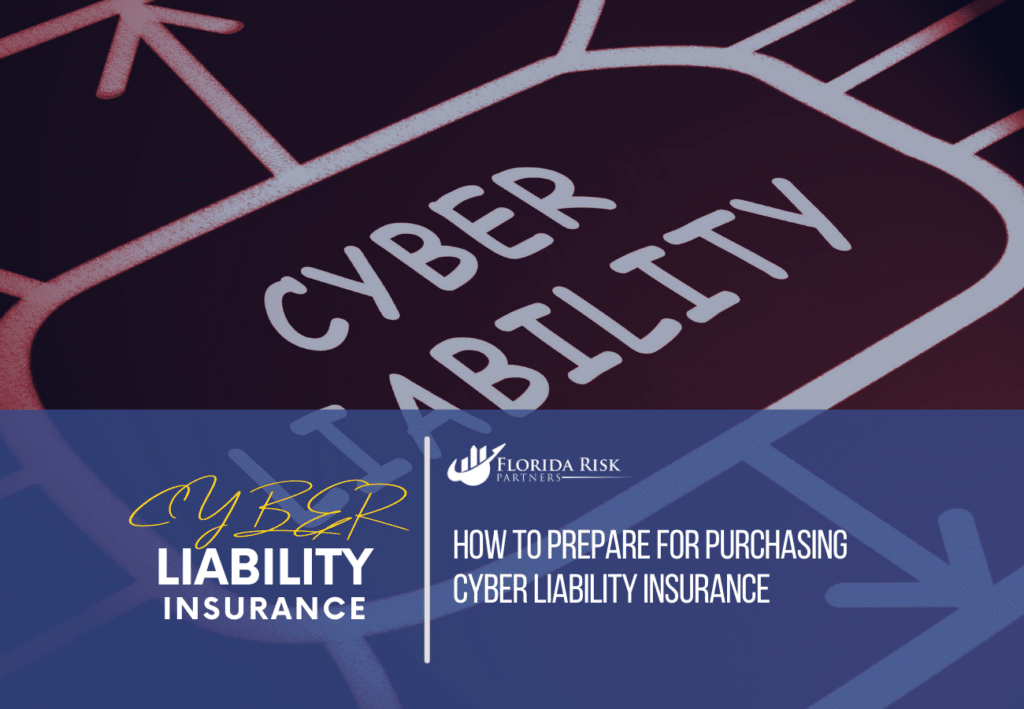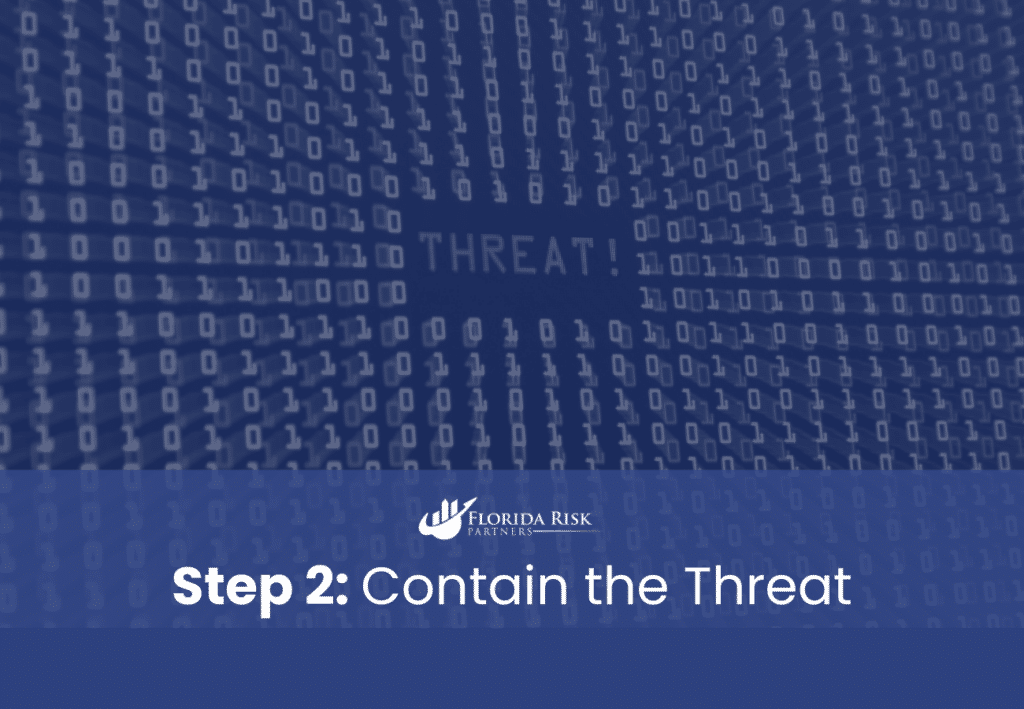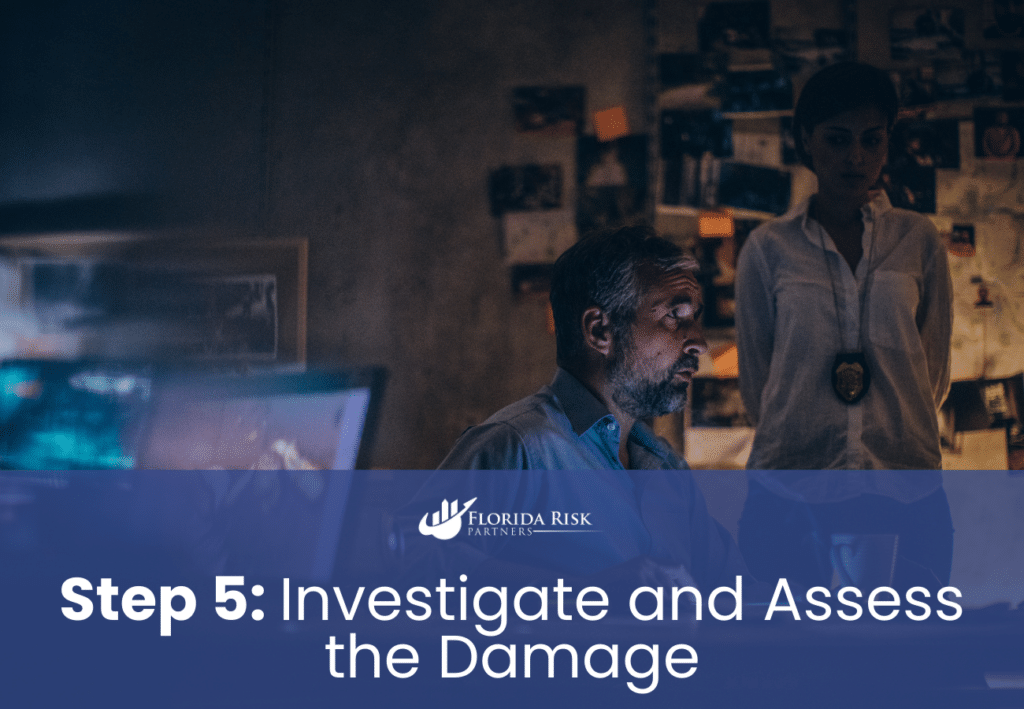-
Main Office: 1434 E. Bloomingdale Ave Valrico, FL 33596-6110
-
Phone: (888) 601-6660
-
Email: info@floridariskpartners.com

No business wants to experience a cyber incident, but the unfortunate reality is that they are increasingly common. From ransomware attacks to data breaches, the impact of a cyber incident can be severe, leading to financial losses, operational disruptions, and reputational damage. While proactive measures like cybersecurity tools and training can reduce your risk, it’s equally important to have a clear plan for responding when an incident occurs.
This guide will walk you through the critical steps to take in the aftermath of a cyber incident, helping you minimize damage, activate your cyber liability insurance, and recover quickly.
The Importance of a Coordinated Cyber Incident Response
A cyber incident is a high-stakes situation that requires immediate action. How your business responds in the first 24-48 hours can significantly affect the overall impact. Without a plan, the chaos of an incident can lead to delays, missteps, and additional damage.
A coordinated response:
- Limits the spread of the attack.
- Protects sensitive data.
- Ensures compliance with legal and regulatory requirements.
- Reduces downtime and financial losses.
By following a structured approach, you can navigate the complexities of a cyber incident with confidence.
Step 1: Recognize and Identify the Incident
The first step is to identify that a cyber incident has occurred. In many cases, the signs may be subtle or mistaken for routine technical issues.
Common Indicators of a Cyber Incident
- Unusual System Behavior: Slow performance, unexpected crashes, or unresponsive applications.
- Unauthorized Access Attempts: Alerts from your cybersecurity tools indicating multiple failed login attempts.
- Data Anomalies: Missing files, corrupted data, or unexplained changes to sensitive information.
- Ransomware Messages: Notifications demanding payment to unlock your systems or data.
- Customer Complaints: Reports of suspicious emails or unauthorized transactions.
Why It Matters:
The sooner you recognize a potential cyber incident, the faster you can act to contain the damage and prevent escalation.
Step 2: Contain the Threat
Once you’ve identified an incident, the immediate priority is to contain the threat to prevent it from spreading to other systems or data.
Steps to Contain a Cyber Incident
- Isolate Affected Systems: Disconnect compromised devices, servers, or networks from the internet to cut off the attacker’s access.
- Change Passwords: Reset passwords for potentially compromised accounts and enforce multi-factor authentication (MFA).
- Disable Unauthorized Access: Terminate any active sessions linked to unauthorized users or devices.
- Pause High-Risk Activities: Temporarily halt online transactions, email communications, or data transfers to prevent further exposure.
Why It Matters:
Containing the incident limits the scope of the attack, making it easier to recover and reducing the overall impact.

Step 3: Notify Key Stakeholders
Clear communication is essential during a cyber incident. Notifying the right people ensures a coordinated response and builds trust with affected parties.
Who to Notify
- Internal Teams: Alert your IT team, senior management, and legal counsel about the incident.
- Incident Response Team: If your cyber liability insurance policy includes access to an incident response team, contact them immediately for expert guidance.
- Customers and Clients: If customer data is compromised, you may need to notify them promptly, depending on legal and regulatory requirements.
- Regulators: Many jurisdictions require businesses to report data breaches within a specified timeframe.
Why It Matters:
Timely notification helps ensure compliance with legal obligations and minimizes reputational damage by demonstrating accountability.
Step 4: Activate Your Cyber Liability Insurance Policy
Cyber liability insurance is a critical resource during a cyber incident, providing financial protection and access to professional services.
Steps to Activate Your Policy
- Contact Your Insurer: Notify your insurance provider as soon as possible, as prompt reporting is often required for claims to be valid.
- Provide Details: Be prepared to share initial information about the incident, such as:
- When it was discovered.
- Systems or data affected.
- Immediate actions taken to contain the threat.
- Follow Insurer Guidelines: Your insurer will provide instructions for filing a claim and accessing resources like forensic experts, legal counsel, and breach response teams.
Why It Matters:
Activating your policy ensures you have the financial and professional support needed to navigate the incident and recover efficiently.
Step 5: Investigate and Assess the Damage
A thorough investigation is necessary to understand the cause and extent of the incident. This information will guide your recovery efforts and help prevent future incidents.
Key Steps in the Investigation
- Engage Forensic Experts: Work with cybersecurity professionals to determine how the incident occurred, which systems were affected, and whether sensitive data was accessed.
- Preserve Evidence: Avoid altering or deleting affected files, logs, or emails, as they may be needed for legal proceedings or insurance claims.
- Document Findings: Keep detailed records of the incident timeline, actions taken, and any communication with stakeholders.
Why It Matters:
A clear understanding of the incident enables targeted remediation and strengthens your defenses against similar threats.

Step 6: Mitigate Damage and Restore Systems
After assessing the damage, focus on mitigating its impact and restoring your business to normal operations.
Steps to Mitigate Damage
- Recover Data: Restore compromised files from secure backups. If backups are unavailable, work with your insurer to explore data recovery options.
- Repair Vulnerabilities: Address the weaknesses that allowed the incident to occur, such as outdated software or inadequate access controls.
- Support Affected Customers: Offer credit monitoring or identity theft protection to customers whose data was compromised.
Why It Matters:
Effective mitigation reduces downtime, rebuilds trust with customers, and minimizes the long-term effects of the incident.
Step 7: Communicate Transparently
Transparency is critical in the aftermath of a cyber incident. Clear communication with stakeholders helps maintain trust and demonstrates your commitment to protecting their information.
What to Communicate
- To Customers: Explain what happened, what data was affected, and what steps you’re taking to protect them.
- To Employees: Share lessons learned and updates to cybersecurity protocols.
- To Regulators: Submit required reports detailing the incident and your response.
Why It Matters:
Transparent communication reduces confusion, builds goodwill, and ensures compliance with regulatory requirements.
Step 8: Learn from the Experience
Every cyber incident is an opportunity to improve. Use the lessons learned to strengthen your cybersecurity measures and prevent future incidents.
Post-Incident Actions
- Review Your Incident Response Plan: Identify gaps or weaknesses and update your plan accordingly.
- Enhance Employee Training: Address specific errors or vulnerabilities that contributed to the incident.
- Upgrade Technology: Invest in advanced cybersecurity tools, such as intrusion detection systems or endpoint protection.
Why It Matters:
Continuous improvement ensures your business is better prepared for the evolving threat landscape.
Take the Next Step Toward Cyber Resilience
A cyber incident doesn’t have to be catastrophic. With a well-coordinated response, you can minimize damage, protect your reputation, and recover more quickly. Cyber liability insurance plays a crucial role in this process, providing the resources and financial support needed to navigate the challenges of a cyberattack.
To learn more about how cyber liability insurance can protect your business, read our comprehensive guide: How to Choose the Right Cyber Liability Insurance for Your Business. This resource will help you evaluate your options and ensure you’re prepared for whatever the digital world throws your way.
Download Our Complimentary Guide to Purchasing Cyberliability Insurance
Don’t wait for a cyber incident to test your resilience. Take action today to protect your business and your future.
Call Us Or
Schedule an Appointment
Select an agent below to view our online calendars and select a day and time that works best for you or call us directly at 888-601-6660. When you use our online calendars, you will receive an email with more information.



